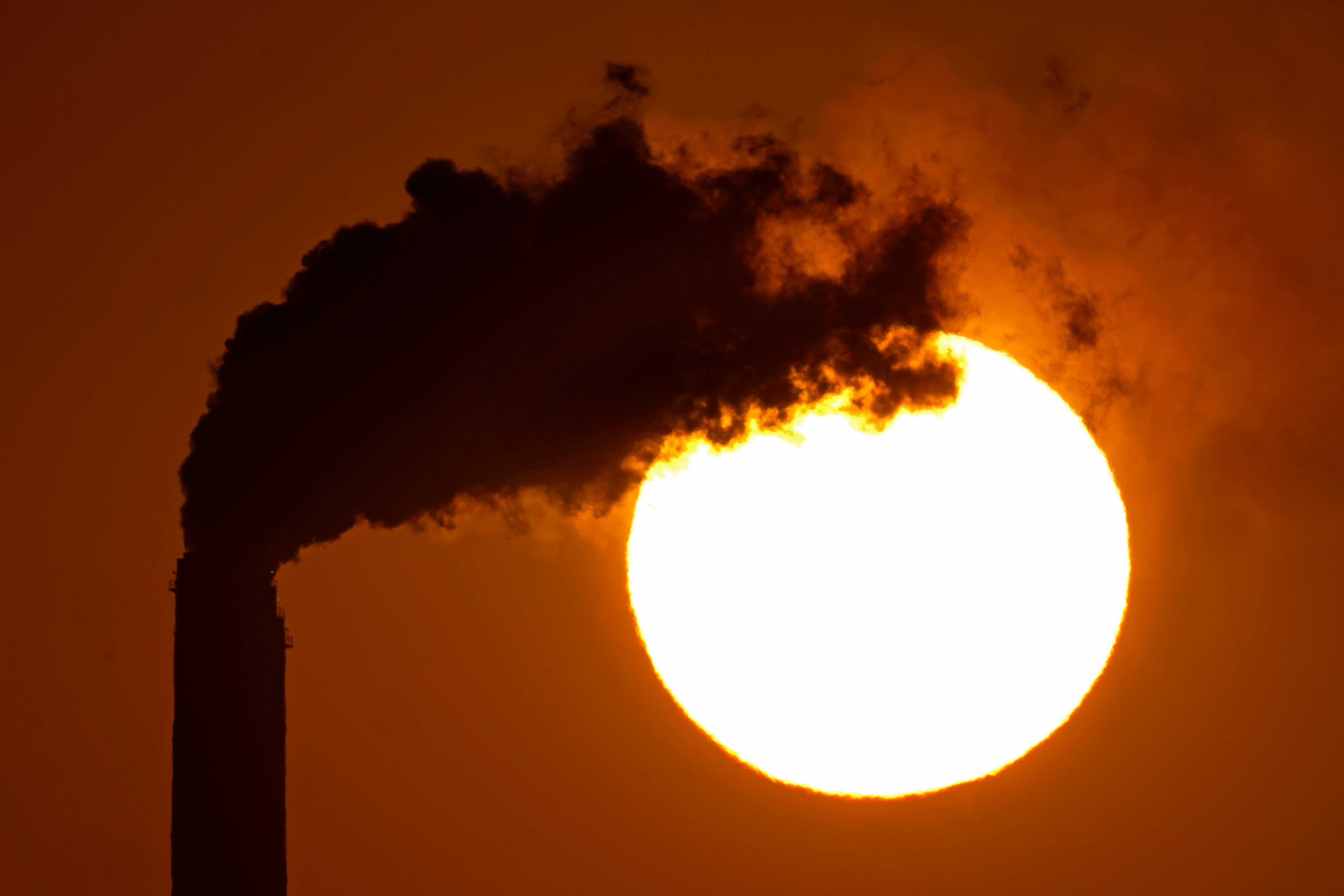Supreme Court seems skeptical of EPA's 'good neighbor' rule on power plant pollution
The Supreme Court’s conservative majority appears skeptical of the federal government’s argument that the Environmental Protection Agency should be allowed to continue enforcing its anti-air-pollution rule in 11 states

The Supreme Court's conservative majority seemed skeptical Wednesday as a government lawyer argued that the Environmental Protection Agency should be allowed to continue enforcing its anti-air-pollution “good neighbor” rule in 11 states while separate legal challenges continue around the country.
The rule is intended to restrict smokestack emissions from power plants and other industrial sources that burden downwind areas with smog-causing pollution.
Three energy-producing states — Ohio, Indiana and West Virginia — challenged the rule, along with the steel industry and other groups, calling it costly and ineffective. The rule is on hold in a dozen states because of the court challenges.
The Supreme Court, with a 6-3 conservative majority, has increasingly reined in the powers of federal agencies, including the EPA, in recent years. The justices have restricted EPA’s authority to fight air and water pollution — including a landmark 2022 ruling that limited EPA's authority to regulate carbon dioxide emissions from power plants that contribute to global warming. The court also shot down a vaccine mandate and blocked President Joe Biden’s student loan forgiveness program.
The court is currently weighing whether to overturn its 40-year-old Chevron decision, which has been the basis for upholding a wide range of regulations on public health, workplace safety and consumer protections.
A lawyer for the EPA said the “good neighbor” rule was important to protect downwind states that receive unwanted air pollution from other states. Besides the potential health impacts, the states face their own federal deadlines to ensure clean air, said Deputy U.S. Solicitor General Malcolm Stewart, representing the EPA.
States such as Wisconsin, New York and Connecticut can struggle to meet federal standards and reduce harmful levels of ozone because of pollution from power plants, cement kilns and natural gas pipelines that drift across their borders.
Judith Vale, New York’s deputy solicitor general, said as much as 65% of some states' smog pollution comes from out of state.
The EPA plan was intended to provide a national solution to the problem of ozone pollution, but challengers said it relied on the assumption that all 23 states targeted by the rule would participate.
Justice Brett Kavanaugh appeared sympathetic to that argument, saying the EPA plan could impose unreasonable costs on states that remain under its authority, because it was initially designed for 23 states.
“EPA said even if we have fewer states, we are going to plow ahead anyway,'' Kavanaugh said. "Let's pretend nothing happened and just go ahead with the 11 states.''
Stewart responded that requirements for states to control air pollution don't change based on the number of states subject to the rule. “The requirements are exactly the same,'' he said.
Justice Ketanji Brown Jackson questioned why the Supreme Court was hearing the case before the other legal challenges were completed. A lawyer for industry groups challenging the rule said it imposes significant and immediate costs that could affect the reliability of the electric grid.
“There are hundreds of millions, if not billions of dollars, in costs over the next 12 to 18 months,'' with only a small reduction in air pollution and no guarantee the final rule will be upheld, said industry lawyer Catherine Stetson. "There are over-control issues here,'' she said.
The EPA has said power-plant emissions dropped by 18% in 2023 in the 10 states where it has been allowed to enforce its rule, which was finalized last March. Those states are Illinois, Indiana, Maryland, Michigan, New Jersey, New York, Ohio, Pennsylvania, Virginia and Wisconsin. In California, limits on emissions from industrial sources other than power plants are supposed to take effect in 2026.
The rule is on hold in another dozen states because of separate legal challenges. The states are Alabama, Arkansas, Kentucky, Louisiana, Minnesota, Mississippi, Missouri, Nevada, Oklahoma, Texas, Utah and West Virginia.
States that contribute to ground-level ozone, or smog, are required to submit plans ensuring that coal-fired power plants and other industrial sites don’t add significantly to air pollution in other states. In cases where a state has not submitted a “good neighbor” plan — or where EPA disapproves a state plan — the federal plan was supposed to ensure that downwind states are protected.
Ground-level ozone, which forms when industrial pollutants chemically react in the presence of sunlight, can cause respiratory problems, including asthma and chronic bronchitis. People with compromised immune systems, the elderly and children playing outdoors are particularly vulnerable.
Environmental and public health advocates have praised the EPA plan as a life-saving measure for people who live hundreds of miles away from power plants, cement factories, steel mills and other industrial polluters.
Industry groups criticize it as having an anti-coal bias that would drive up the cost of electricity.
___
Associated Press writer Mark Sherman contributed to this story.
Subscribe to Independent Premium to bookmark this article
Want to bookmark your favourite articles and stories to read or reference later? Start your Independent Premium subscription today.
